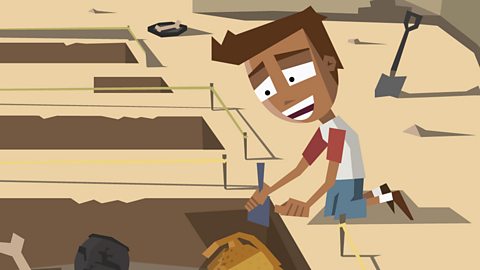Let's get started

This lesson, in partnership with the Imperial War Museums will help you:
- Find clues to the past in your area.
- Study a war memorial near where you live.
- Learn about the importance of war memorials.
You will learn to unlock fascinating World War One stories about the people and place where you live.
World War One memorials
These come in different shapes and sizes. Here are a few memorials from cities and villages around the UK.
- Image source, Martin Briscoe (WMR-78191)
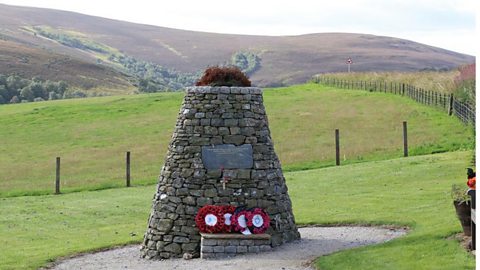
Image caption, Some memorials to World War One are over 100 years old or are very traditional like Cabrach Cairn in Cabrach, Scotland.
- Image source, © WMR-76515
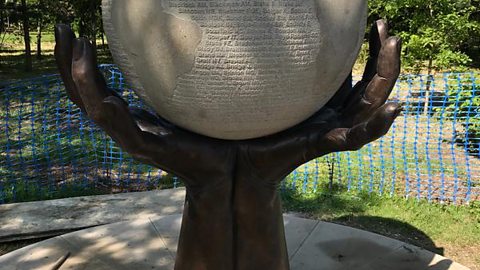
Image caption, This is a memorial for Nurses who served in the National Arboretum, England.
- Image source, © Simon Greaves (WMR-82401)
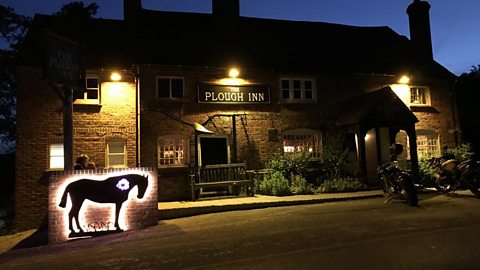
Image caption, This memorial in Hampshire, England, is for horses that were part of the war effort.
- Image source, © Peter Alhadeff (WMR-88566)
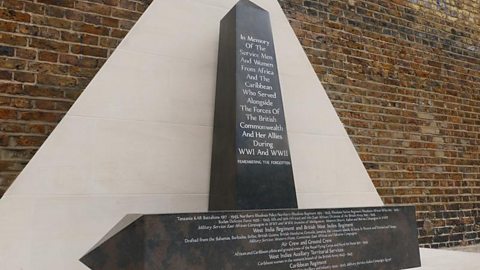
Image caption, In Brixton, London, this memorial honours the service men and women from Africa and the Caribbean who served alongside Britain during WW1 and WW2.
- Image source, © Gary Adams (WMR-6430)
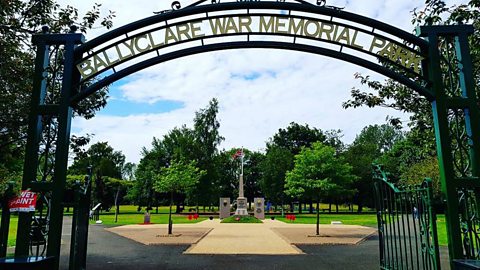
Image caption, This war memorial park in Ballyclare, Northern Ireland, is dedicated to those who served in WW1 and WW2.
1 of 5
- World War One happened over 100 years ago between 1914 - 1918.
- During the war, people from all over the UK and the wider world fought and served in Europe, Africa and Asia.
- Many people did important jobs to help the war effort.
- During and after World War One, people all over the United Kingdom created many different memorials in their towns and villages to make sure we did not forget their generation’s work and sacrifices.
- We often live amongst memorials without even realising they are there.
A war memorial is any object built or dedicated to remember:
- people killed, injured or affected by war, conflict or peacekeeping.
- this includes people who died in accidents or by disease, not just fighting.
Watch - Let's detect
Hafsah Aneela Bashir helps you become a local history detective.
Hello, I’m poet and write Hafsah Aneela Bashir, and today we’re going to find out how you can become a local history detective.
I live here in Manchester, and it has so much history here it is amazing.
And this, is the Imperial War Museum North. Museums are a great place to learn about history, but there are clues to all kids of histories on buildings and streets where you live.
Today we are going to investigate clues in your local area to help us understand World War One.
World War One lasted from 1914 to 1918, and ended just over a hundred years ago. It affected the whole world and people wanted to remember what happened and who was involved, in fact, that’s how the museum began.
A museum like this however, is one place to learn about the war. How can I learn more? I need to become a local history detective, and you can too. Come on.
A good place to start is to find a war memorial near to where you live, there are over 90,000 war memorials in the UK. In fact in nearly every town and village has one.
You can find them in parks, railway stations, and even In schools. Many of them are about World War One, and each tells a unique story.
Often they are placed somewhere that has special meaning, or they represent something that is meaningful to the local people.
This kind of detection tells you about World War One, but also tells you about the local area, and it’s a great way to understand the different kinds of people involved.
I’ve got a detect worksheet and tip off about four unusual memorials around the UK. You can do the same as me and start your own investigations where you live.
Lets Detect. D is for decide. First I need to decide what memorials I want to investigate. I’ve chosen one in my local area of Manchester, and three around the United Kingdom. These are the memorials I have chosen.
The Animal memorial in Woodbank Memorial Park in Stockport, that’s not too far from here. The Scottish War Poets Memorial, Edinburgh in Scotland. The Postal Workers Memorial, Port Talbot in Wales. And the All Staff Memorial, Belfast City Hospital in Northern Ireland.
E is for examine. What do the surroundings tell you?
We local history detectives need clues. There is a sign in my local area that says Woodbine Memorial Park is dedicated to remembering World War One. And I can see that inside the park, there is a memorial that remembers the contributions of animals in war.
When we think of war we mainly think of soldiers, sailors and airmen. But animals played their part in World War One such as horses, pigeons and even rats. And continued to do so in conflicts afterwords.
In Port Talbot in Wales, the surroundings provide us with an essential clue about who the memorial was for. It’s inside a local post office and dedicated to postal workers in the war.
The memorial in Belfast City Hospital is dedicated to all the staff that served in World War One. From medical staff, to cooks and cleaners.
One that strikes me is the memorial in Edinburgh, dedicated to Scottish war poets outside the writers museum. I’m a poet so it makes wonder what it was like to be a port during the war. These memorials have got me asking lots of questions.
The first T is for Think. Let’s ask questions using the five Ws. What, When, Where, Who and Why?
Where were all the staff from Belfast City Hospital during the war? What poems did the Scottish war poets write? When was the post office in Port Talbot open during World War One? And why does the Stockport Memorial look like it does? And what did the animals do in the war?
I may not find all the answers today, but a local history detective needs questions. All I need now is an expert to answer them.
The second E is for Expert. With help from a grown up, you might want to do a quick internet search, or you could visit a War Memorial register. But there are lots of experts and enthusiasts in your community too, maybe even in your own home.
Talking to local people helps you find out more because they have local knowledge.
C if for change. The animal memorial has changed over the years as the weather has started to rot the wood. I wonder how much longer the memorial will stay standing.
The last T is for Tell. The more we talk about out detective work, the more everyone can understand about local history and why things happened.
Lets, D E T E C T. Detect.
Watch - Case study
Hafsah uses her DETECT skills to look at the Dickin Memorial in Woodbank Memorial Park, Stockport.
Hafsah Hello again, i've organised a video call with Mathew Norman who works for the Imperial War Museum and is also a local history enthusiast. He's going to be my expert to help me learn more about Woodbank memorial park.
Hafsah Hi Mathew, thanks for agreeing to do this today.
Mathew Hi Hafsah, thanks for asking me. As you can see i'm at the gates of Woodbank memorial park. And the park is a war memorial given to the people in Stockport in 1921, to remember those who were killed in World War One.
Hafsah So how is the park used?
MathewWoodbank park is a very large park, used a lot by local people that come here to play football, to walk their dogs. So its a really, really popular place and it's got a lot of history.
Hafsah How did it become a memorial for local men killed in World War One?
MathewIn 1921, the land was bought by a man called Thomas Rowbotham. Thomas gave the park to the people of Stockport as a gift, and as a memorial to those local men who were killed in World War one.
MathewWhat's really interesting is that although the park itself is a memorial, inside the park there are other memorials.
Hafsah Yeah i heard about that, isn't there a memorial for animals that died in World War One.
MathewSo this memorial here is craved from an old tree. It’s called the Dickin Memorial, and the Dickin medal is given to animals who have served in war and died, and showed great bravery. And there is a honorary medal for horses in World War One. But this memorial was made by a local artist woodcarver called Tim Burgess, and he’s carved it with a chainsaw.
Hafsah So the park is very old, but the Dickin Memorial is much newer?
MathewYeah, that’s right Hafsah, when Tim first finished the memorial it would have looked very new. But over the years it has weathered. The sunshine and the rain have made it rot, bits are starting to fall off. I actually spoke to he sculpture and asked them if he minds them falling to disrepair, and he said no, they are made of wood. That’s a natural process.
Mathew That’s really interesting that in a few years time this memorial, this tree might not even be here, it might have rotted completely. But, the history will always be there, because there will be people to remember it was there, people will remember seeing it there are photographs of it. There’s this video.
Hafsah That’s really interesting Mathew, thank you so much. Bye-bye!
Hafsah I feel like I have learned a lot about the history of my local area that I didn’t know just a few days ago.
Hafsah I hope you enjoyed finding out about the memorials and the local history where you live. Good luck!
Activity
You can use the DETECT pack to carry out your own investigation of a World War One memorial in your local area.
Let’s DETECT!
| D | Decide | Find a local history topic to investigate |
| E | Examine | Use the 5 W’s to help you – Who, What, When, Where, Why? |
| T | Think | What information is missing? |
| E | Expert | Who could you ask about this? |
| C | Changes | What has changed over time in the area you are investigating? |
| T | Tell | Share your information to make sure local stories are remembered |
- Download the DETECT activity pack to get started.
- Follow the six steps of DETECT to find out about a memorial near you.
Quiz
SAT’s preparation resources. activitySAT’s preparation resources
Get ready for the SATs papers with videos, activities, quizzes and games to refresh your knowledge and practise your skills.

More on Understanding evidence
Find out more by working through a topic
- count1 of 2
